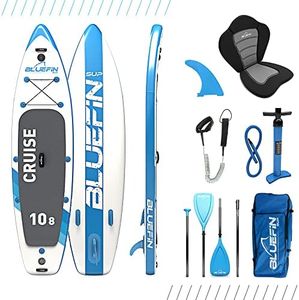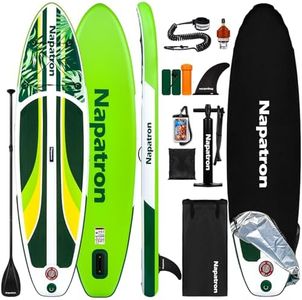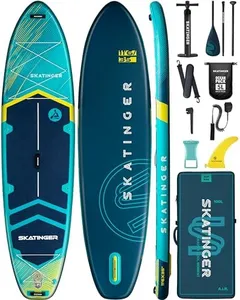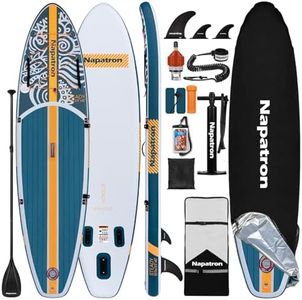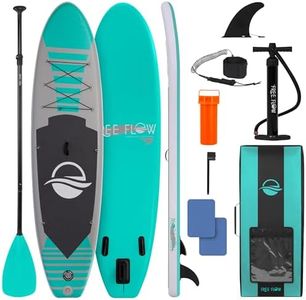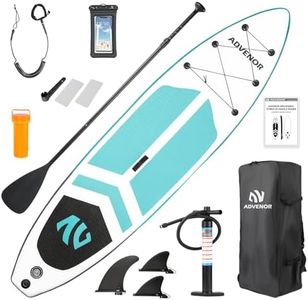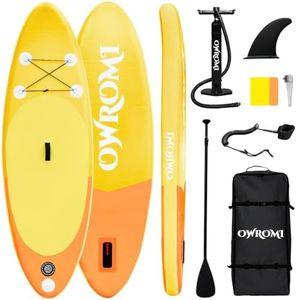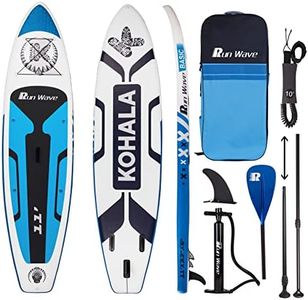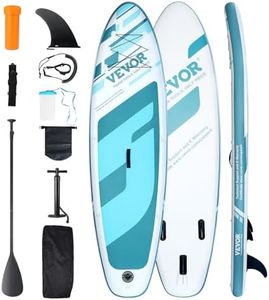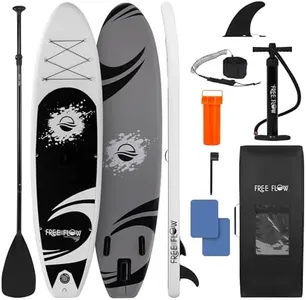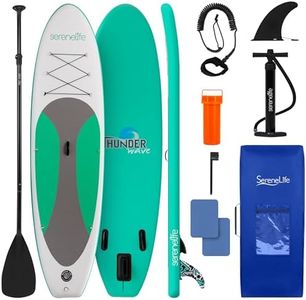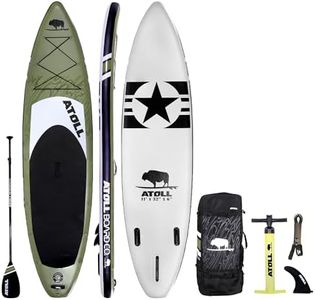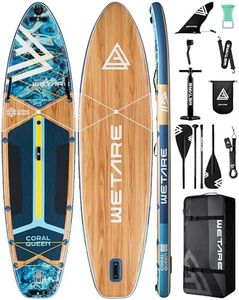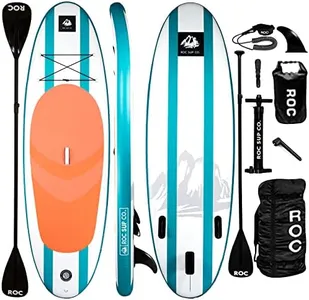We Use CookiesWe use cookies to enhance the security, performance,
functionality and for analytical and promotional activities. By continuing to browse this site you
are agreeing to our privacy policy
10 Best Stand Up Paddle Boards
From leading brands and best sellers available on the web.Buying Guide for the Best Stand Up Paddle Boards
Choosing the right stand-up paddle board (SUP) can make a huge difference in your enjoyment and success on the water, whether you want to explore calm lakes, try surfing waves, or take on a yoga session afloat. SUPs come in different shapes, sizes, and materials, each tailored to various activities and skill levels. The most important thing is to consider how and where you'll use your board, and then match its specifications to those needs. This way, you can find a SUP that's comfortable, stable, and easy for you to use, making your paddling experience safe and fun.Board TypeStand-up paddle boards are typically divided into categories like all-around, touring, surfing, racing, and yoga boards. This classification depends on the shape and intended use of the board. All-around boards suit most beginners and casual paddlers, providing a good balance of stability and versatility. Touring boards are longer and narrower for better speed and tracking over distance, making them great for longer trips. Surf SUPs are shorter, curvier, and handle waves better, while racing boards are long and narrow for high speed on flat water. Yoga boards are usually wide and stable, offering extra surface area for movements. Picking the right type depends on your main activity: choose all-around for versatility, touring for trips, surfing for the waves, racing for speed, and yoga for balance.
LengthThe length of a paddle board affects how it moves in the water. Short boards (under 10 feet) are easier to maneuver and better for surfing or kids. Medium-length boards (10 to 12 feet) are the most common for all-around use, striking a balance between speed, stability, and ease of turning. Long boards (over 12 feet) are best for touring or racing because they glide farther and track straighter. Your best length choice depends on what you want to do most: shorter for playfulness, medium for all-purpose, and longer for straight tracking and distance.
WidthWidth mainly determines how stable a board feels under your feet. Narrow paddle boards (about 29 inches or less) are faster and track better but can be tippy, suiting experienced paddlers or racers. Wider boards (over 32 inches) are much steadier, making them great for beginners, heavier paddlers, or for yoga, but they can be a bit slower. Moderate widths (30 to 32 inches) balance speed and stability for most people. Think about how much you care about speed versus how confident you feel balancing: beginners usually like more width, while advanced paddlers can handle narrower boards.
ThicknessA paddle board's thickness impacts both its volume and how well it supports weight. Thicker boards (often 5 to 6 inches) offer more float and rigidity, especially for heavier paddlers or those carrying extra gear. Thinner boards (about 4 inches) are lighter and may feel more connected to the water but can be less stable, especially for heavier users. To choose best, consider your own weight and how much gear you bring—a thicker board supports more. Lighter or smaller paddlers can comfortably use thinner boards.
VolumeVolume, measured in liters, is a key factor in how much weight a board can hold while staying stable and afloat. Higher volume means more buoyancy. If you’re heavier or plan to carry a child or dog or lots of gear, choose a higher-volume board. Lighter or more experienced riders can use lower-volume boards without losing performance. Manufacturers list a recommended weight capacity, so check that your weight is within that range for best results.
Construction (Inflatable vs. Solid)Paddle boards can be either inflatable or solid (rigid). Inflatable boards are made of tough PVC, are lightweight, easy to store, and more forgiving if bumped into things—they’re great for travel, families, or limited storage space. Solid boards are often made of foam, fiberglass, or plastic, offering better performance, speed, and feel on the water, but they are heavier and take up more space. Choose inflatable for portability or if you have little storage, and solid for the best on-water performance or if you have space to store it.
FinsFins underneath the board help it track straight and stay stable. Most boards have a large center fin or several fins. Multiple or larger fins improve tracking and stability, while smaller or fewer fins make turning easier. Some boards feature removable or adjustable fins for versatility. If you plan to paddle mainly in straight lines (like on lakes), a bigger or center fin is helpful. For surfing or more maneuverability, smaller or multiple fins are better.
Weight CapacityEvery paddle board has a maximum weight it can support safely and comfortably, usually listed by the manufacturer. Exceeding this makes the board sluggish and less stable. Be sure to add up your weight and any gear you plan to carry, and choose a board whose capacity covers your total. If you’re close to the limit, size up for comfort and performance.
